Abstract
The effect of cooling rate on seeds was studied by hydrating pea (Pisum sativum), soybean (Glycine max), and sunflower (Helianthus annuus) seeds to different levels and then cooling them to − 190°C at rates ranging from 1°C/minute to 700°C/minute. When seeds were moist enough to have freezable water (> 0.25 gram H2O/gram dry weight), rapid cooling rates were optimal for maintaining seed vigor. If the seeds were cooled while at intermediate moisture levels (0.12 to 0.20 gram H2O per gram dry weight), there appeared to be no effect of cooling rate on seedling vigor. When seeds were very dry (< 0.08 gram H2O per gram dry weight), cooling rate had no effect on pea, but rapid cooling rates had a marked detrimental effect on soybean and sunflower germination. Glass transitions, detected by differential scanning calorimetry, were observed at all moisture contents in sunflower and soybean cotyledons that were cooled rapidly. In pea, glasses were detectable when cotyledons with high moisture levels were cooled rapidly. The nature of the glasses changed with moisture content. It is suggested that, at high moisture contents, glasses were formed in the aqueous phase, as well as the lipid phase if tissues had high oil contents, and this had beneficial effects on the survival of seeds at low temperatures. At low moisture contents, glasses were observed to form in the lipid phase, and this was associated with detrimental effects on seed viability.
Full text
PDF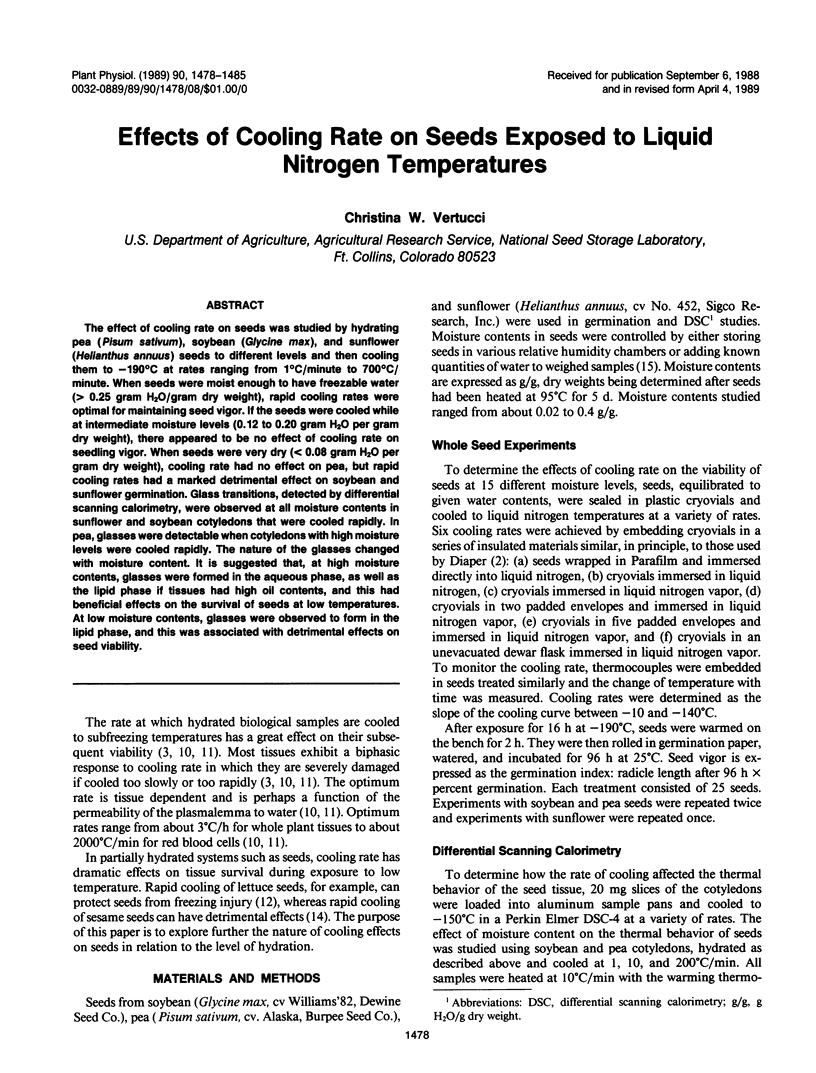
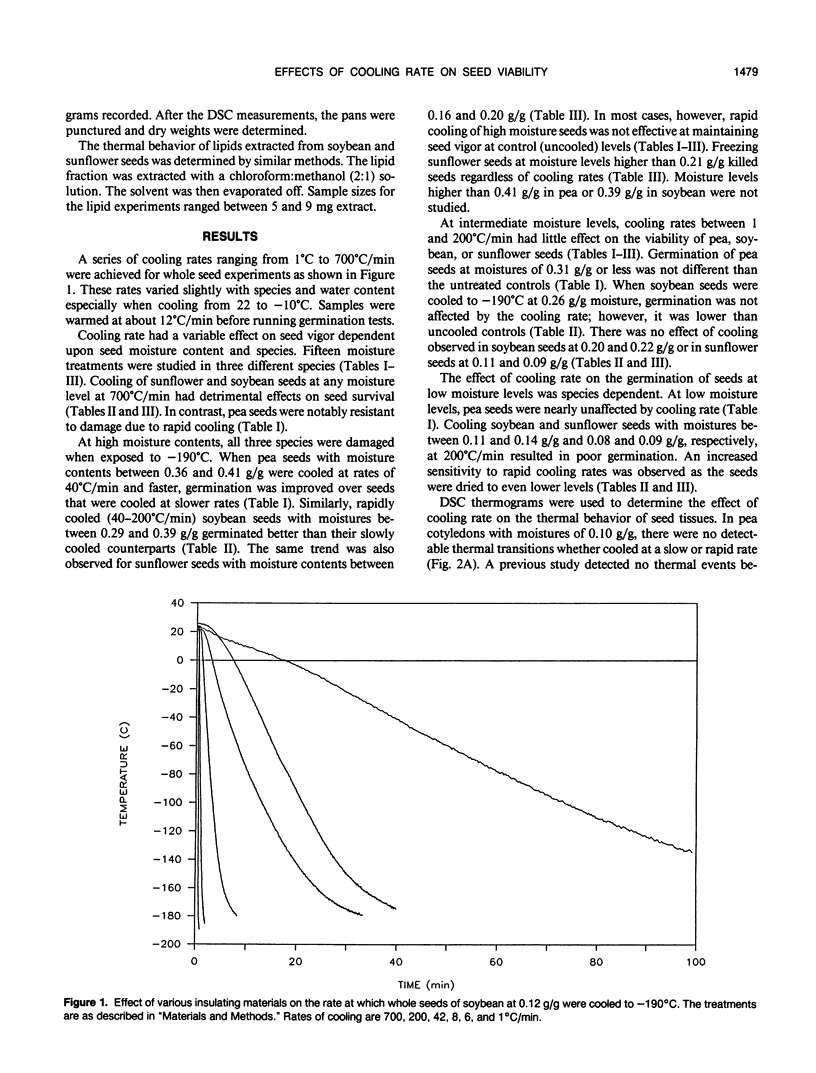
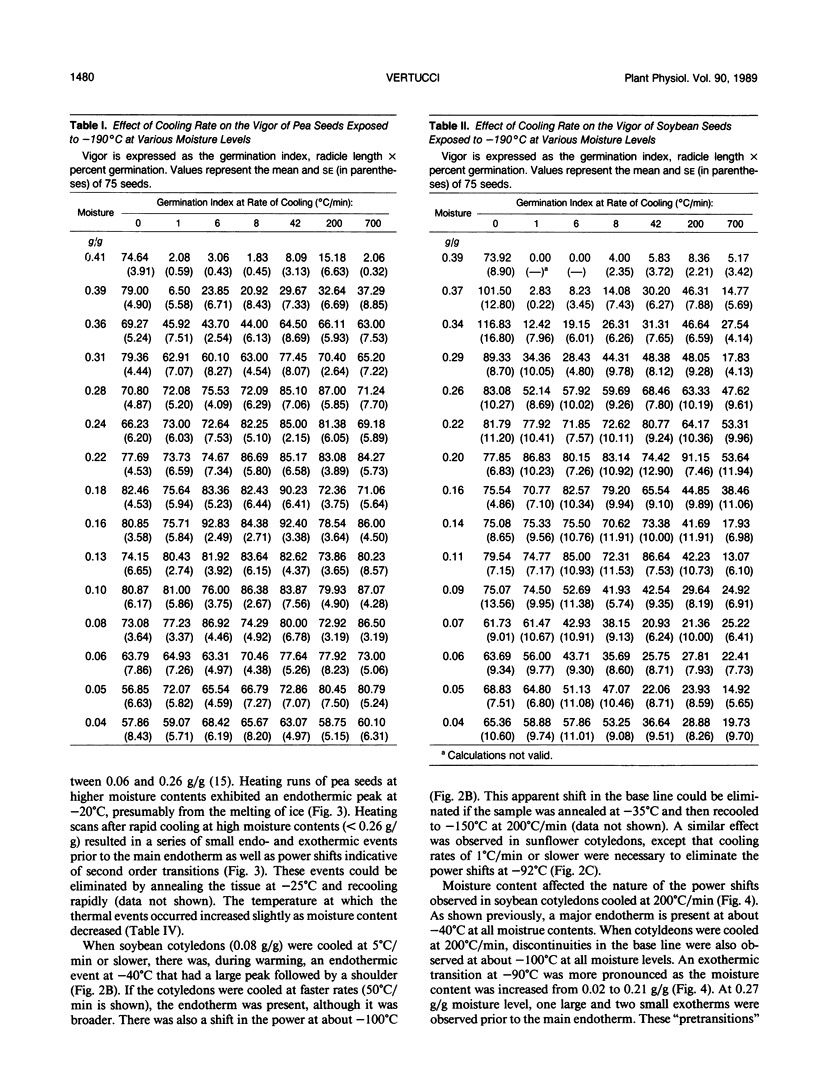
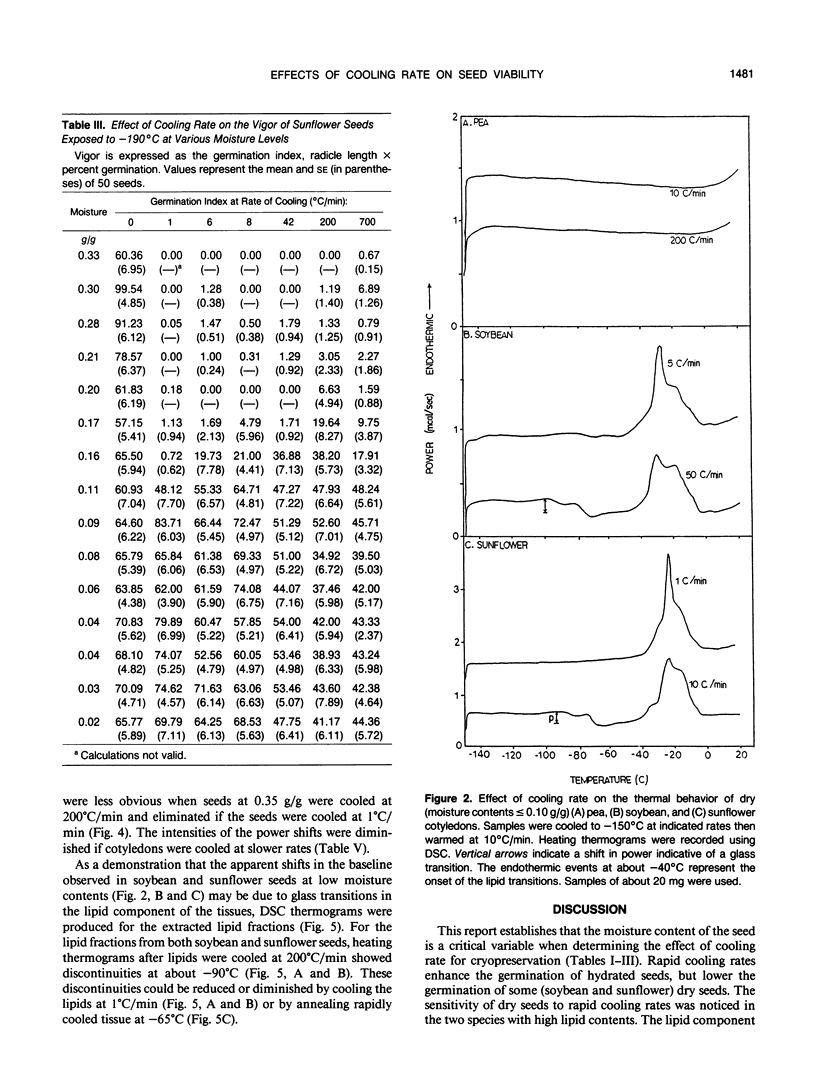
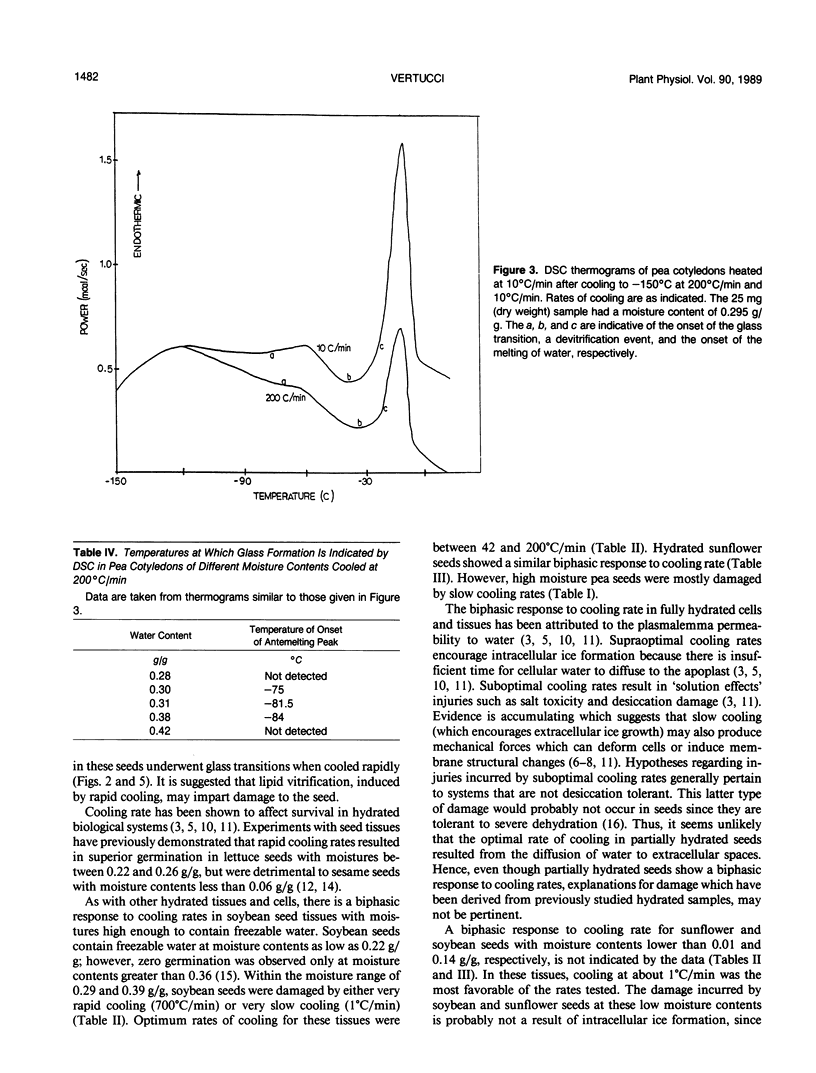
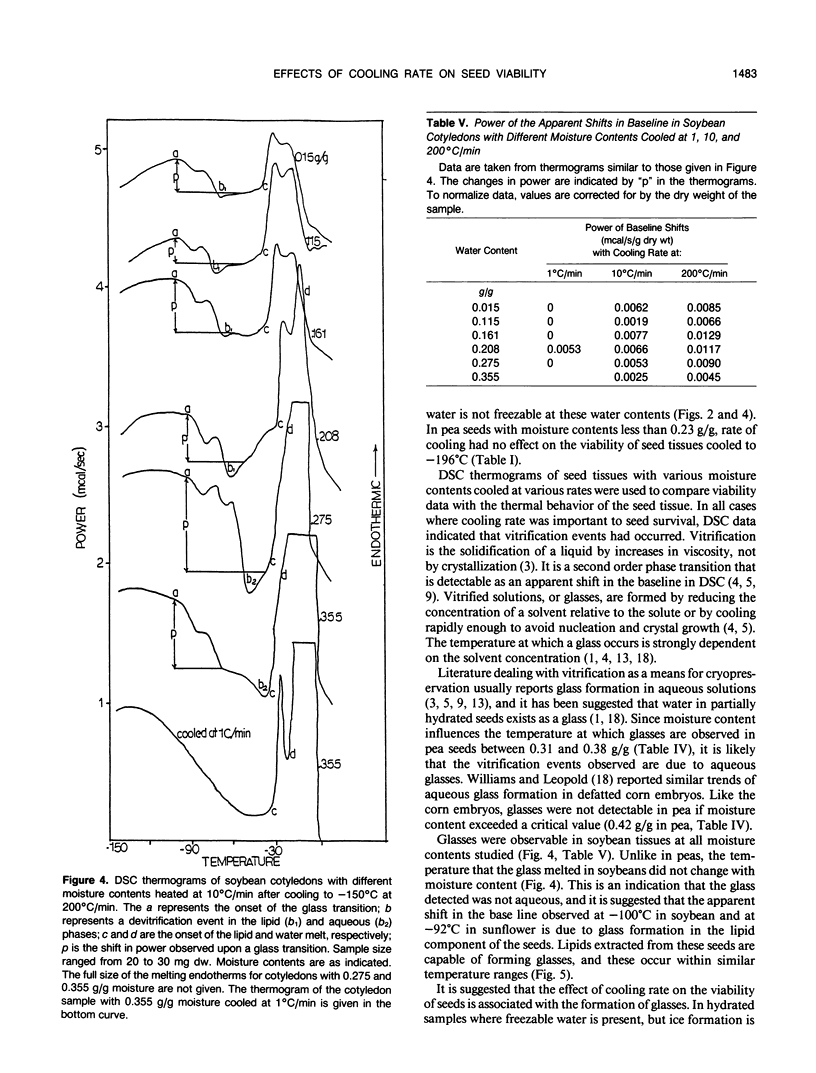
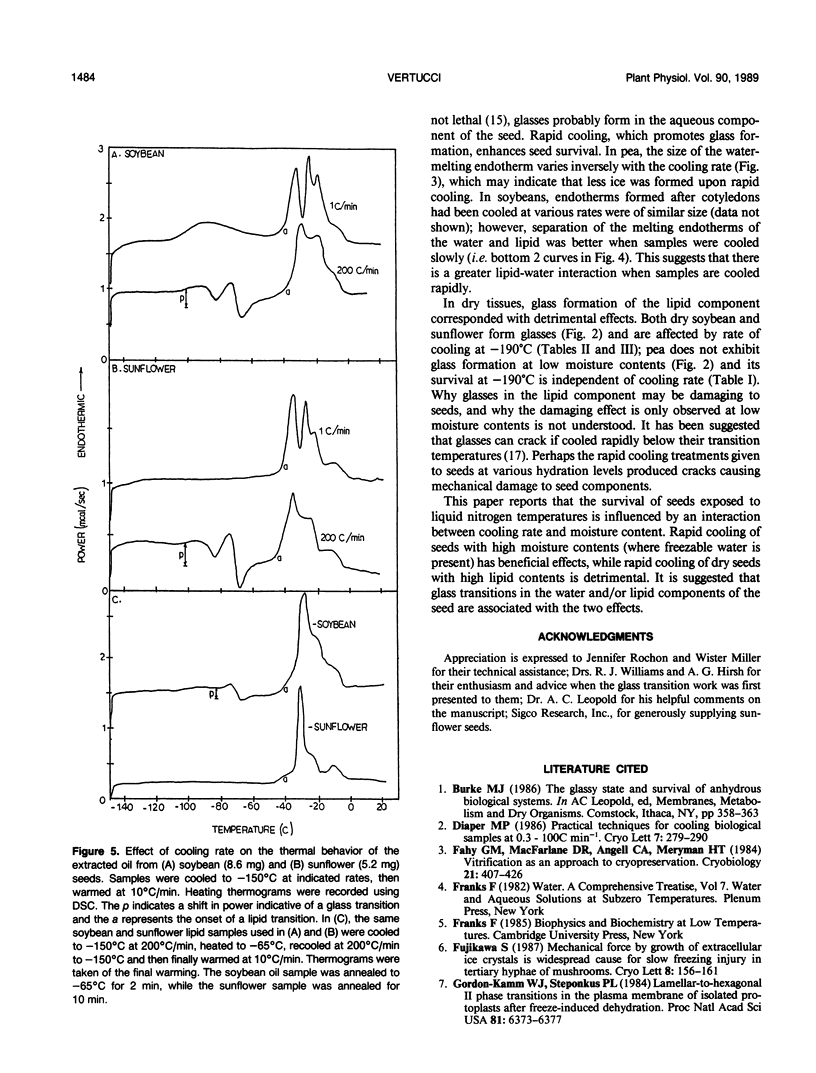
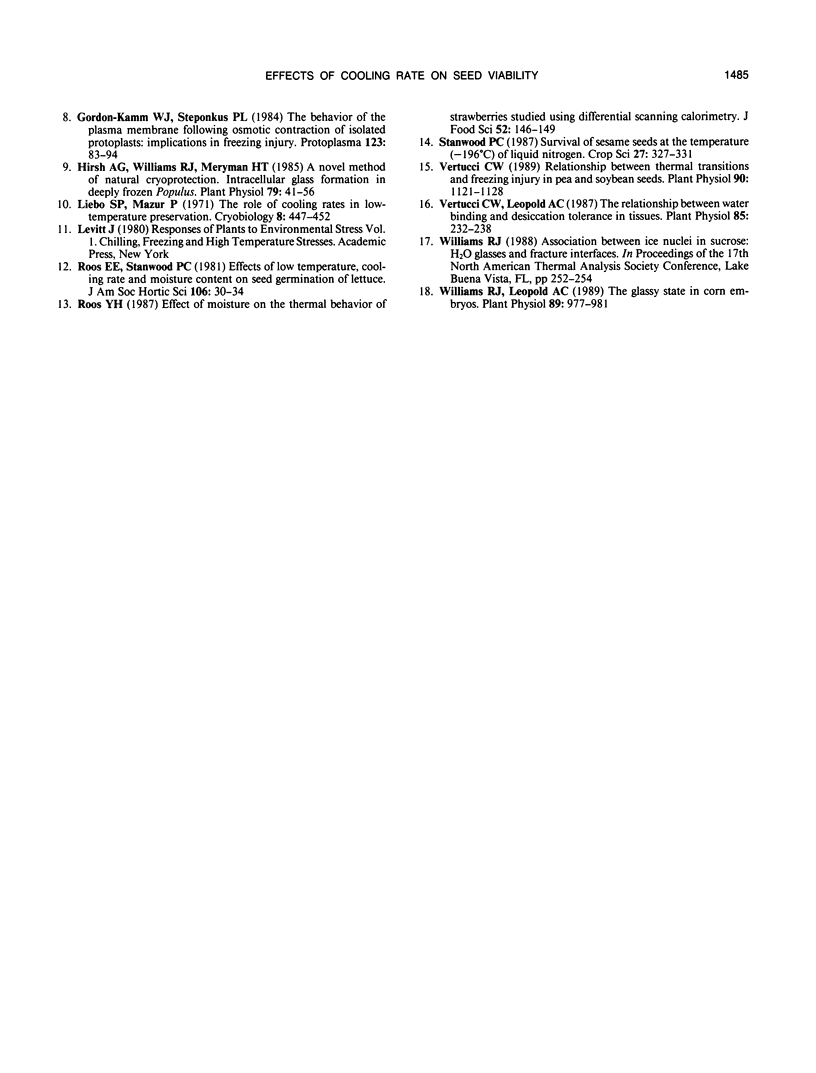
Selected References
These references are in PubMed. This may not be the complete list of references from this article.
- Fahy G. M., MacFarlane D. R., Angell C. A., Meryman H. T. Vitrification as an approach to cryopreservation. Cryobiology. 1984 Aug;21(4):407–426. doi: 10.1016/0011-2240(84)90079-8. [DOI] [PubMed] [Google Scholar]
- Gordon-Kamm W. J., Steponkus P. L. Lamellar-to-hexagonalII phase transitions in the plasma membrane of isolated protoplasts after freeze-induced dehydration. Proc Natl Acad Sci U S A. 1984 Oct;81(20):6373–6377. doi: 10.1073/pnas.81.20.6373. [DOI] [PMC free article] [PubMed] [Google Scholar]
- Hirsh A. G., Williams R. J., Meryman H. T. A novel method of natural cryoprotection : intracellular glass formation in deeply frozen populus. Plant Physiol. 1985 Sep;79(1):41–56. doi: 10.1104/pp.79.1.41. [DOI] [PMC free article] [PubMed] [Google Scholar]
- Leibo S. P., Mazur P. The role of cooling rates in low-temperature preservation. Cryobiology. 1971 Oct;8(5):447–452. doi: 10.1016/0011-2240(71)90035-6. [DOI] [PubMed] [Google Scholar]
- Vertucci C. W., Leopold A. C. The relationship between water binding and desiccation tolerance in tissues. Plant Physiol. 1987;85:232–238. doi: 10.1104/pp.85.1.232. [DOI] [PMC free article] [PubMed] [Google Scholar]
- Vertucci C. W. Relationship between Thermal Transitions and Freezing Injury in Pea and Soybean Seeds. Plant Physiol. 1989 Jul;90(3):1121–1128. doi: 10.1104/pp.90.3.1121. [DOI] [PMC free article] [PubMed] [Google Scholar]
- Williams R. J., Leopold A. C. The glassy state in corn embryos. Plant Physiol. 1989 Mar;89(3):977–981. doi: 10.1104/pp.89.3.977. [DOI] [PMC free article] [PubMed] [Google Scholar]


